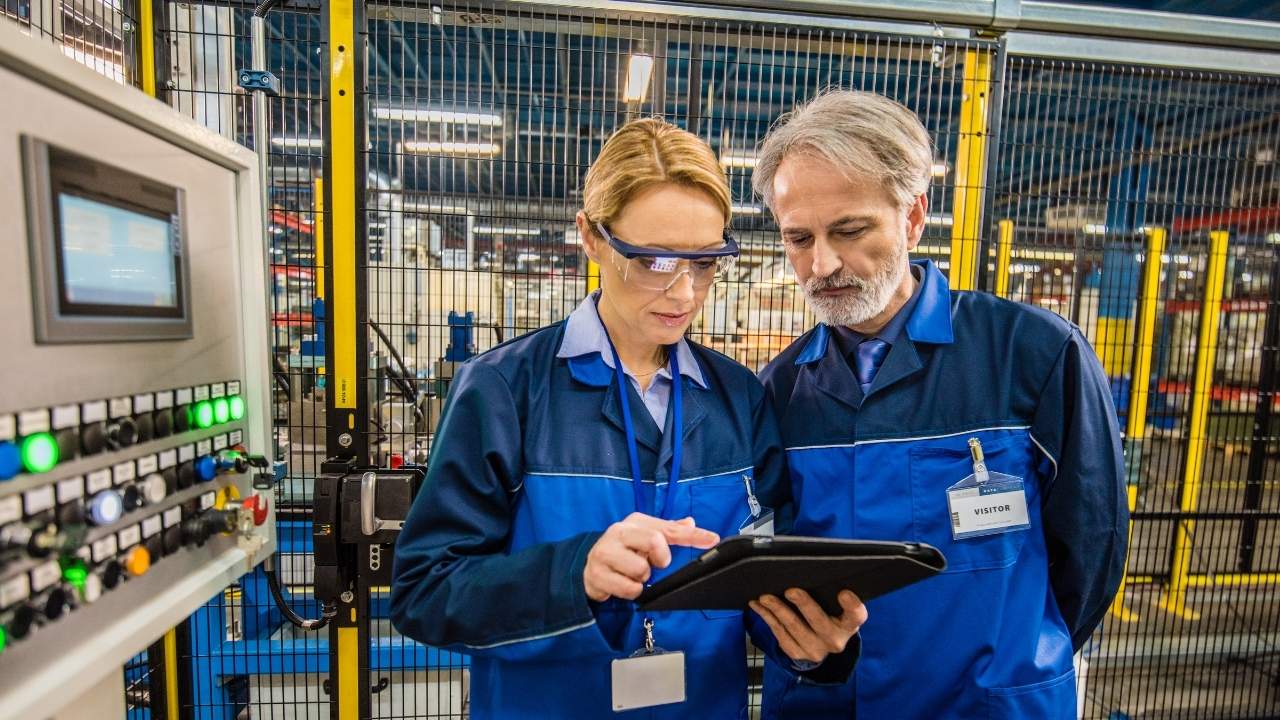Cost accounting serves as a vital tool in safeguarding profit margins by meticulously cataloging and monitoring both direct and indirect expenditures. By offering valuable insights, it facilitates improved budget management, heightened operational efficiency, and consequently, enhanced profitability.
Managing costs is a cornerstone of successful business operations. This principle is particularly apparent in the realms of manufacturing goods and providing services, where a multitude of expenses can swiftly erode or even eliminate a company’s profit margin if left unchecked.
What is Cost Accounting?
Cost accounting delves into a company’s comprehensive production expenses for its offerings, be they products or services. As a facet of management accounting, it scrutinizes both variable and fixed costs, remaining solely for internal scrutiny. These findings empower company stakeholders to pinpoint the most lucrative offerings and those that incur excessive costs relative to sales.
Moreover, cost accounting plays a pivotal role in shaping budget allocations, determining pricing strategies for products and services, and guiding overarching business tactics.
Cost Accounting takeaways:
- Cost accounting is essential for informed business decisions, offering techniques to identify, manage, and minimize expenses to maximize profits.
- Although cost accounting offers advantages such as improved decision-making and efficient production oversight, obstacles like precise cost allocation persist for certain businesses.
- The evolution of cost accounting is linked with technological progress, urging practitioners to incorporate innovations like AI and big data for strategic planning.
- Distinguishing between cost and financial accounting is pivotal, yet their synergy is fundamental for comprehensive financial administration.
Understanding Cost Accounting
Cost accounting involves the systematic monitoring, examination, and consolidation of both fixed and variable expenses linked to producing a product, procuring goods for sale, or rendering a service. These expenses encompass material and labor costs, alongside operational expenditures associated with a particular product or service. By scrutinizing these elements, cost accounting aids companies in pinpointing areas where cost management can be enhanced, while also guiding pricing strategies to guarantee profitability.
The data generated through cost accounting is exclusively utilized by a company’s internal management team, allowing for tailored collection methods tailored to suit the company’s requirements.
Components of Cost Accounting
Cost accounting revolves around three key components: materials, labor, and overhead.
- Material
Materials serve as the inputs for production and are typically categorized into two groups: direct and indirect.
Direct materials comprise the materials and parts directly used in the production process and are reflected in the final product. These can be further divided into raw materials, like cotton for clothing or plastic for phone cases; work-in-progress, referring to products still undergoing production; and finished goods, denoting products ready for sale.
Indirect materials are considered overhead expenses. Examples include safety equipment and cleaning supplies. Only direct materials are itemized on the cost sheet.
- Labor
Workers engaged directly in the production, distribution of goods, or delivery of services require compensation. Their wages or salaries may encompass overtime and bonuses, with employee benefits also factored into the total cost.
Similar to indirect materials, indirect labor costs are treated as overhead expenses rather than direct labor expenses.
- Overhead Expenses
These expenses are associated with the production, distribution of goods, or provision of services but cannot be directly attributed to specific goods or services. Common overhead costs include:
1. Equipment setup, such as for factory machinery.
2. Utility bills, encompassing factory electricity, water, and sewerage.
3. Facility costs, including rent or mortgage payments and property taxes.
4. Payroll taxes and contributions to pensions.
5. Depreciation of fixed assets, like factory machinery and store equipment.
6. Interest payments.
Types of Costs Explained
The creation of goods and services involves a spectrum of costs, each playing a vital role in business operations. Understanding these costs and incorporating them into cost accounting calculations is crucial for businesses seeking to manage expenses effectively and enhance operational efficiency.
Direct Costs
These expenses are directly associated with the production or acquisition of products, or the delivery of services. For manufacturers, direct costs encompass raw materials, parts utilized in the final product, and the labor involved in production, collectively termed as product costs. In certain service-oriented businesses like law firms, labor may constitute the sole direct cost. Conversely, businesses such as auto mechanics necessitate inventory, like car parts, as a direct cost.
Operating Costs
Indirect costs linked to production that cannot be specifically attributed to a particular product or service fall under operating costs. Examples include heating, lighting, and the associated labor. Equipment acquisitions also qualify as indirect costs because, although utilized for production, they do not directly contribute to the final product.
Fixed Costs
These costs remain constant irrespective of production levels and must be paid regardless of output volume. Fluctuations in production or demand can lead to unit cost escalation or reduction, as fixed costs exert a consistent financial burden regardless of operational scale.
Variable Costs
These costs vary in tandem with a company’s production levels. For instance, a manufacturer of skiing equipment may witness fluctuations in material, labor, and overhead costs corresponding to seasonal demand shifts. Certain costs demonstrate both fixed and variable components; for example, electricity expenses for running production machinery fluctuate with usage, whereas heating and lighting costs for the facility generally remain stable unless operational adjustments, such as adding shifts, are made.
Different methodologies of cost accounting
- Standard Costing: This method estimates costs based on optimal labor and material usage under standard conditions. Actual costs are then compared to these estimates to identify variances, aiding in cost control and process improvement.
- Activity-Based Costing (ABC): ABC allocates overhead costs to specific activities involved in production. It’s useful for companies with diverse product lines, ensuring accurate cost distribution based on varying levels of materials and labor.
- Lean Accounting: Supporting lean principles, this approach focuses on maximizing productivity by eliminating waste. It emphasizes just-in-time supply lines and meeting customer demand, considering all costs associated with value streams as direct costs.
- Project Accounting: This discipline manages financial transactions related to specific projects, including cost estimation, materials, billing, and revenue. It ensures comprehensive cost assessment throughout a project’s lifecycle.
- Target Costing: In competitive industries with thin profit margins, target costing sets maximum allowable production costs. If costs exceed the target, production is adjusted to maintain profitability.
- Lifecycle Costing: This method accounts for all expenses associated with an asset over its lifespan, including acquisition, maintenance, and disposal costs. It aids in understanding the true cost of ownership and informs decisions on equipment purchases.
- Cost Volume Profit (CVP): Also known as break-even analysis, CVP evaluates the impact of variable and fixed costs on profits. It helps determine the number of units needed to cover production costs and assists in decision-making during market fluctuations.
Cost Accounting Formulas
Each type of cost accounting offers valuable insights and tools for effective financial management and strategic decision-making.
Cost accounting relies on various formulas to assess financial performance and guide decision-making. Here are some essential formulas and explanations:
Break-even Formula Determines the point at which total sales cover total production costs.
Break even (in units) = Total Fixed Costs / Contribution Margin
Contribution Margin Measures incremental profit per unit after deducting variable costs.
Contribution Margin = Sales Revenue – Variable Costs
Target Net Income Calculates the number of units needed to achieve a specific profit goal.
Unit volume to achieve target net income = (fixed costs + target net income) / (contribution margin per unit)
Gross Margin Indicates the amount left after subtracting COGS from net sales.
Gross margin = (net sales revenue – COGS) / net sales revenue
Price Variance Measures the difference between standard and actual costs.
Price variance = (actual unit cost – standard unit cost) x number of items purchased
Efficiency Variance Evaluates operational effectiveness for materials, labor, and overhead.
– Material yield variance = (actual unit usage – budgeted unit usage) x budgeted cost per unit
– Labor efficiency variance = (actual per-unit labor hours – budgeted per-unit labor hours) x budgeted hourly labor cost
– Overhead efficiency variance = (actual per-unit labor hours – budgeted per-unit labor hours) x budgeted overhead rate per unit
Variable Overhead Variance Monitors variable overhead costs.
– Overhead efficiency variance = (actual labor hours – budgeted labor hours) x budgeted overhead labor rate
– Overhead spending variance = (actual overhead labor rate – budgeted overhead labor rate) x actual labor hours
Closing Inventory Calculates the value of goods remaining at the end of an accounting period.
Closing inventory = beginning inventory + net purchases – cost of goods sold
Inventory Valuation Methods
- FIFO (First in, First out)
- LIFO (Last in, First out)
- Weighted Cost Average
These formulas provide insights into cost control, profitability, and inventory management, crucial for effective financial management and strategic planning in businesses.
What purpose does Cost Accounting Serve to the Business?
Cost accounting serves as a vital tool for organizations to assess the costs associated with their production processes or services. Though it demands meticulous attention to detail and significant time investment, its strategic insights render it indispensable for most businesses.
Here are some key areas where cost accounting proves beneficial:
- Budgeting: At the core of budget planning lies cost accounting. By scrutinizing actual expenses, organizations can better forecast future fixed and variable costs and allocate resources to various product lines effectively.
- Efficiency: Standard costs are grounded in the optimal utilization of labor and materials. Cost accounting offers managers a comprehensive overview of how closely actual costs align with budgeted projections, enabling them to identify areas of inefficiency.
- Profitability: Unchecked fluctuations in expenses can erode profits, even amid robust sales. Cost accounting highlights instances where specific production costs outweigh revenues, empowering managers to enact necessary adjustments to safeguard profitability.
In essence, cost accounting equips organizations with the insights needed to streamline operations, enhance resource allocation, and maintain profitability amidst evolving market dynamics.
Streamline cost accounting efforts effortlessly with Versa Cloud ERP
A Modern ERP Solution such as Versa Cloud ERP automates complex processes, saving time and reducing expenses. It empowers internal management with vital insights for informed budgeting, pricing strategies, and business decisions.
Versa Cloud ERP automatically tracks expenses against budgets, highlights variances, and calculates essential metrics like break-even points and gross margins. This enables managers to pinpoint savings opportunities, mitigate losses, and capitalize on growth prospects.
Evolved from the Industrial Revolution, cost accounting serves as a vital management tool, evaluating total production costs including materials, labor, and overhead.
Empower your business with the knowledge to navigate the realm of an Integrated ERP solution, specifically tailored to your business needs. Gain insights, streamline processes, and propel your financial management to new heights with this comprehensive guide
With Versa Cloud ERP’s Implementation guide learn how a business can ensure a successful ERP Solution Implementation. Navigate the complexities of implementation with confidence!
A Small Business in the modern day with Omnichannel Retail is complex and requires resources to deliver on its goals and achieve its full potential. To create a small business success story business owners need an ERP Solution that grows with them.
Effectively manage your financials, accounting, inventory, production, and warehouse management workflows with our award-winning ERP.
Let Versa Cloud Erp’s do the heavy lifting for you.
[widget id=”custom_html-40″]
[widget id=”custom_html-42″]
[widget id=”custom_html-30″]
Do Business on the Move!
Make your businesses hassle-free and cut the heavyweights sign up for the Versa Cloud ERP today!!
Join our Versa Community and be Future-ready with us.
[widget id=”custom_html-20″]






